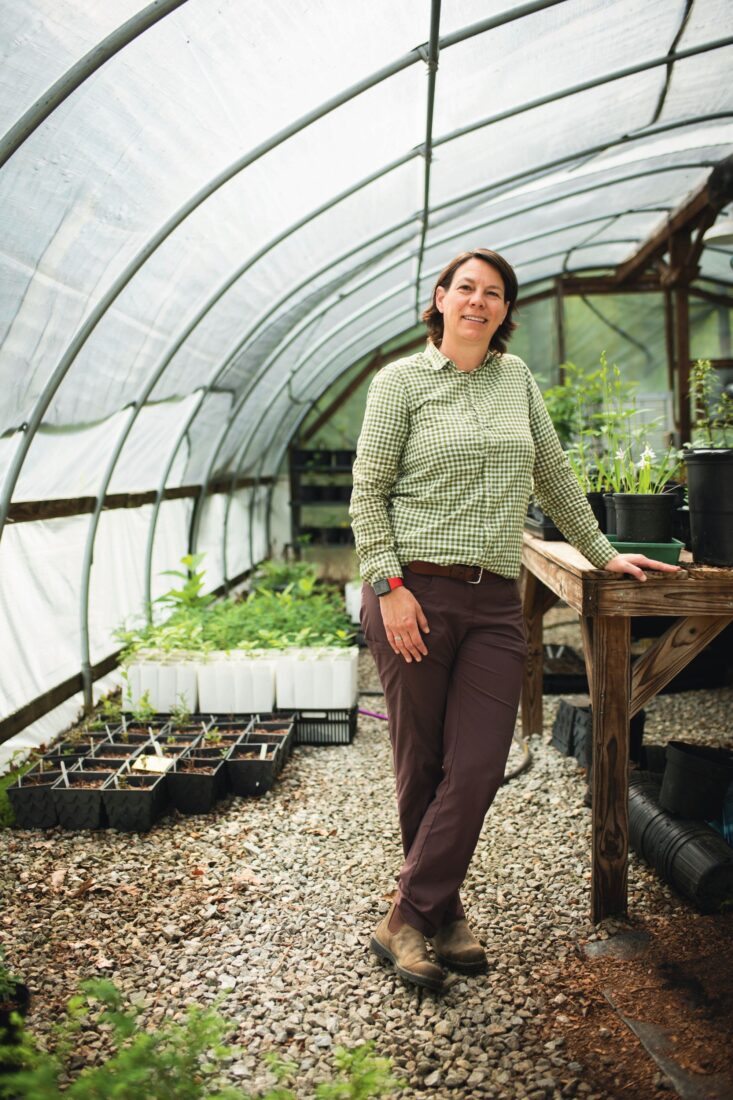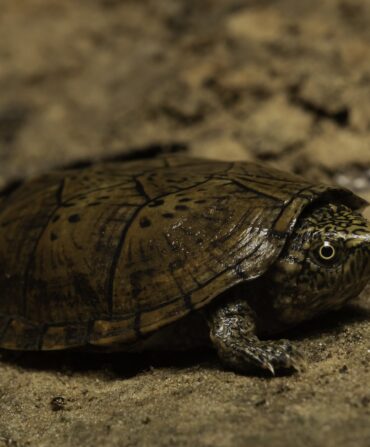In the offices of Southern Highlands Reserve (SHR), a botanical garden and research center perched at 4,500 feet atop North Carolina’s Toxaway Mountain, a huge brown paper bag filled with red spruce cones overflows on a desk. A freezer drawer brims with packages of neatly labeled red spruce seeds. Trays divided into little squares of dirt line a back room, each harboring a future red spruce, almost ready to germinate. “We do love our red spruce trees here,” says Kelly Holdbrooks, the nonprofit’s executive director since 2015.

While working on a landscape crew in Asheville well before that, Holdbrooks had watched in horror as another team brutally cleared the side of Reynolds Mountain. Soon after, she enrolled in graduate school to become a landscape architect focusing on sustainable practices, leading to an internship at SHR. After she graduated, the group offered her a job. Almost immediately, she rose to her current position, a “baptism by fire.”
The Chattanooga native oversees the reserve’s 120 breathtaking acres of native plants and pollinators, but the heart of her mission lies in the restoration of the country’s most endangered forest type. High-elevation spruce-fir forests—the Southern version of boreal forests—exist at roughly five thousand feet and above and harbor their own web of life, including specialized species such as the northern saw-whet owl and the Carolina northern flying squirrel. They once proliferated in the Appalachians. Then logging took hold. “Only fragments remain,” Holdbrooks explains. “We call those isolated patches sky islands.” In 2015, she cofounded SASRI, the Southern Appalachian Spruce Restoration Initiative, and its members, including the Nature Conservancy, put together a plan for red spruce restoration to complement efforts farther north. SHR, as the only organization growing baby red spruces, would single-handedly provide the trees.
Since then, Holdbrooks and SHR have grown some ten thousand trees and, in partnership with the U.S. Forest Service, planted six thousand of them at sites spanning three states, including North Carolina’s Mount Mitchell, Tennessee’s Whigg Meadow, and Virginia’s Whitetop Mountain. In their new homes, the trees have an unprecedented 90 percent success rate thanks to SHR’s early care. This fall, the reserve will debut a state-of-the-art sustainable greenhouse that will allow SHR to more than double its red spruce production. “The first time I stepped into a spruce-fir forest, I felt like I was entering a magical other world,” Holdbrooks says. “This is my life’s work, and I feel so fortunate that I found it.”
Homebase: Brevard, North Carolina
Affiliations: Southern Highlands Reserve
Side Quest: During construction of the new SHR greenhouse, Holdbrooks was determined that production of baby spruce seedlings wouldn’t stop. So when it got too cold for the vulnerable young trees, she took them all to her house for the winter.
Read about all of G&G’s 2024 Champions of Conservation.








